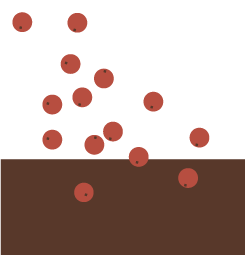Did you know? Sorghum can also be used as a cover crop

The objectives of summer cover crops are mainly to cover the soil quickly, produce sufficient biomass to feed the soil and avoid the escape of nitrates to the groundwater. For a succesful sorghum cover, several techniques are possible:

– direct sowing, very soon after harvest to take advantage of soil moisture,
– sowing after stubble cultivation, with a grain drill,
– sowing on the fly before harvesting the main crop; however, the successful implementation of sorghum with this technique is very uncertain and often requires increasing sowing rates. Whereas in the first two cases, the recommended sowing rates are 10 to 12 kg per hectare.

The good development of the cover will obviously depend on the quality of the sowing, the soil moisture and the rains to come. The development of sorghum requires little water, however its development is still conditioned by rainfall. If there is no rain, the development will be slowed down or stopped and will resume with the first rain.

The use of multi-cut sorghum as cover will restore a significant amount of biomass to the soil. It will contribute to soil life and influence its organic matter content. Depending on the state of development of the crop, sorghum can provide 3 to 5T DM per ha. The development of the plant is altered as soon as temperatures drop below 10 ° C, which facilitates its destruction.
Continue ?
Sorghum, an ally against global warming

The assets of sorghum in crop rotations.













